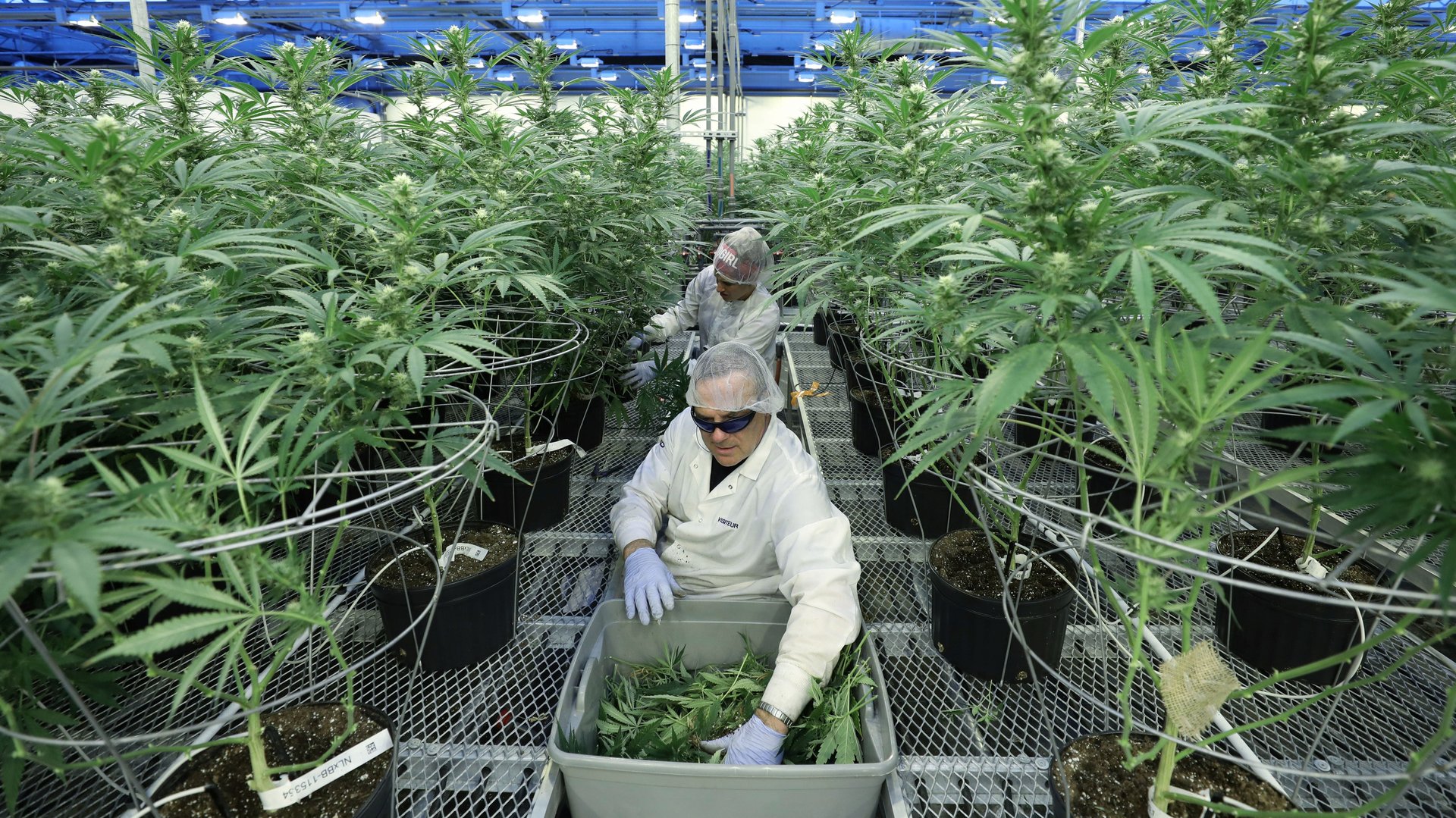The case for slowing down the cannabis industry
Some opponents of widespread marijuana legalization, recognizing that “reefer madness” scare tactics are no longer credible, have attempted to reframe the debate as opposition to another big tobacco.


Some opponents of widespread marijuana legalization, recognizing that “reefer madness” scare tactics are no longer credible, have attempted to reframe the debate as opposition to another big tobacco.
Comparing the emerging cannabis industry to the tobacco industry is not entirely fair. Tobacco use has been responsible for millions of deaths and untold illness, whereas, for most people, the biggest danger of marijuana is getting caught with it. Still, the marijuana industry is as committed to profitability as any other industry, and there’s no reason to think it won’t act aggressively in its own best interest. Marijuana’s legalization in the US at this point seems inevitable—but should local, state, and federal governments slow down its commercialization?
The predominant narrative around legal marijuana thus far is that it’s been a success on its own terms. More people who want marijuana can have it, the industry has created jobs and pays taxes, and some of the injustices of the war on drugs— such as criminal records that impede people’s ability to get jobs, housing, and student loans—are being unwound. The US is a polarized country, but in the “green rush,” Americans have shown they can still put aside their differences to make money: Cannabis executives contribute to candidates on both sides of the aisle.
Not every aspect of the legalization process has been done fairly, or well, but for a major sociological shift, it has gone remarkably smoothly. While adult marijuana use has climbed in legal states, most of the data suggest teenage use has not, nor has the legalization of marijuana led to a rise in fatal car crashes. It’s famously impossible to overdose on weed, and all of the evidence suggests the drug is less likely than booze to lead to a car wreck or violence.
The smooth introduction of legal marijuana, however, does not necessarily mean that mass market marijuana is a good idea.
The cannabis industry arose opportunistically from the drug war. When companies sing the praises of marijuana or bemoan the injustices of prohibition, they’re not necessarily wrong, but they are always self-interested. Most of them have so far played nice, at least partly because they are obsessed with reducing the stigma around the drug and attracting more users. That could change as their wealth and influence grows. And marijuana does have the profile of a vice industry, in that a small portion of heavy users are disproportionately responsible for its profits. Just as there are accomplished people who smoke a lot of weed, there is a small segment of the population for whom pot is disastrous, though it’s difficult to tell if there’s a causal relationship.
A middle ground exists between criminalization and immediate commercialization. One of the ten US states that have legalized recreational use, Vermont, has decided not to create a legal market. People can grow their own marijuana and possess small amounts for personal use, but there are no shops selling it, and no sanctioned factories making edibles and high-powered concentrates preferred by the heaviest users. In Washington DC—where using weed is legal but there isn’t a market because of opposition from outgoing congressional Republicans—an Etsy-worthy cannabis “gifting economy” has arisen. In both of these cases, people who want marijuana can have it; the drug loses its power as a tool unjustly wielded and there is still potential for the medical marijuana research everyone agrees should happen.
Societal problems caused by legal weed, should they arise, will likely emerge over time. While something horrible, like a wave of birth defects, is possible, the drawbacks of legalization may be more subtle, as they are with, say, smartphones. This is a massive social experiment with a drug which is, in many ways, still unfamiliar. Right now the driving force behind legalization is a for-profit industry that is happy to write state laws if lawmakers don’t understand what’s happening (and they usually don’t). While it may not be realistic for all states to delay a for-profit industry—taxes, after all are part of the incentive to legalize—they should at least consider opening commercial access slowly, and making an effort to fully understand the new drug and industry as they do. Otherwise the likes of Marlboro’s maker, which recently invested $1.8 billion in a cannabis company, will dictate the terms on which we let this newly legal drug into our lives.